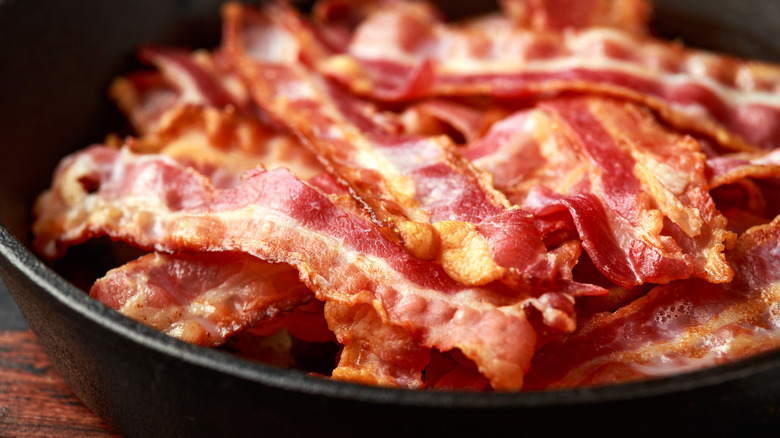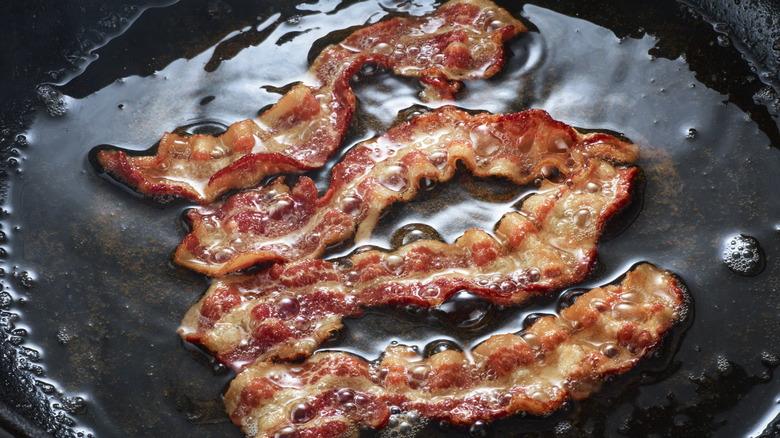The Low And Slow Frying Method To Get 100% Of The Bacon Fat
Cooking bacon is a messy affair. And what should you do with all that leftover grease?
You definitely shouldn't pour it down the sink, it's a surefire way to clog your drains. But you should stop and reconsider before you sop it up with a paper towel or scrape the cooled grease into the trash, too. The residue left in your pan is rendered bacon fat, and it's a boon in the kitchen.
Use bacon grease in place of butter or vegetable oil to give popcorn, vegetables, or even cookies a subtle smoky flavor. Admittedly, it's not exactly a secret ingredient. Cooks around the world have been using bacon grease and lard — a similar form of rendered pork fat — for centuries. Modern cooks tend to balk, though: isn't it unhealthy?
While bacon fat isn't the best choice for the health-conscious, some nutritionists argue that it's no worse than butter. As Kelly Quinn, Registered Dietitian Nutritionist and Cornell University lecturer told Delish, bacon fat has roughly the same calories and fat as other popular cooking oils. To avoid potential carcinogens, Quinn recommends looking for nitrate-free bacon.
Nutritionist Jo Travers of the British Dietetic Association takes it a step further. As The Independent reports, Travers argues that pig fats, like bacon grease and lard, contain essential nutrients that you can't find in butter. That said, the NHS still recommends vegetable oil or olive oil over fats like butter or lard.
Ready to try it? Here's how.
The best way to render bacon fat
If you're not familiar with the term, "rendering" might sound more complex than it actually is. It's actually quite simple: it just means cooking the meat slowly to release as much fat as possible, something you should be doing anyway for optimal results.
To get the most fat out of your bacon cook it as you normally would in a skillet or frying pan, but take your time. Starting with several slices of bacon in a cold pan, slowly raise the temperature until they're cooking at low heat. The fat will start to dissolve leaving crispy, evenly cooked bacon.
While you should always take the cut of bacon into consideration, finding the right cut is especially important when attempting to render fat. Fatty cuts are best, so avoid center cuts in favor of bacon ends. Avoid added flavors: while maple bacon might go well with a pancake breakfast, it'll clash if you try to use the fat for a grilled cheese sandwich.
Once the bacon is done, strain the grease using a mesh strainer, coffee filter, or piece of cheesecloth. Leaving burnt bits of bacon floating in the fat will make it go rancid faster. Pour it into a covered container and freeze or refrigerate it. It should last a long time. Filtered bacon grease should last up to three months.

